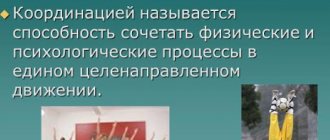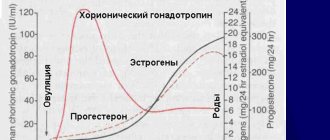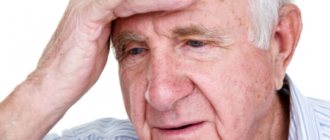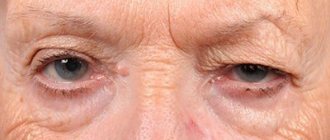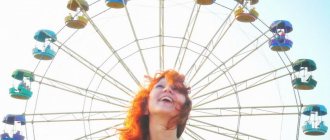Coordination
Coordination
- the process of coordinating the work of muscles necessary for the successful performance of a motor function. With the development of a motor skill, the coordination of movements changes, including the development of the inertia of moving organs. At first, control occurs through active static fixation of these organs, then through short-term physical impulses directed at a certain moment to the desired muscle. At the final stages of coordination development, inertial movements are used. In an already established dynamically stable movement, balancing of all inertial movements occurs automatically, without producing additional correction impulses.
For children 8-10 years old
At this age, you can begin to perform a complex to improve coordination, which is recommended not only for children, but also for adults:
- rotation with arms bent at the elbows (standing position, arms bent at the elbow joints, and fingers touching the shoulder, rotate your arms in different directions)
- drawing imaginary figures (arms are extended forward and simultaneously describe different figures, for example, the left one is a circle, and the right one is a square);
- jumping according to the classics (we jump with one leg, then with two, and so on, alternating);
- stand on one leg (standing position, one leg bent, arms to the side and maintain balance for 10-15 seconds, change legs);
- stand on one leg with a toe raise (standing position, hands on the waist, one leg bends at the knee and moves to the side, now rise to the toe and maintain balance, repeat in the other direction).
You can also do already familiar exercises on a balance beam, bench, wall bars, rings, gradually making them more difficult.
Coordination of movements
Coordination of movements
given to a person so that he can perform precise movements and control them. If there is a lack of coordination, this indicates changes occurring in the central nervous system. Our central nervous system is a complex, interconnected formation of nerve cells located in the spinal cord and brain. When we want to make any movement, the brain sends a signal, and in response to it, the limbs, torso or other parts of the body begin to move. If the central nervous system does not work coherently, if deviations occur in it, the signal does not reach the target or is transmitted in a distorted form.
"Up the hill"
Goal: development of coordination of movements, balance, strengthening of the muscles of the feet.
form of implementation: individual.
Progress of the game: an adult sits or stands, and places the child in front of him, supporting him by the hands, saying: “Let’s climb the hill,” stimulates the movement of the child’s feet along the adult’s leg. When the child rises high, the adult reads a Russian nursery rhyme:
Oh guys, ta-ra-ra!
There is a mountain on the mountain,
And on that mountain there is an oak tree,
And there will be a funnel!
Causes of impaired coordination of movements
There are many reasons for impaired movement coordination. These include the following factors:
- physical exhaustion of the body;
- exposure to alcohol, narcotic and other toxic substances;
- brain injuries;
- sclerotic changes;
- muscle dystrophy;
- ;
- ;
- catalepsy is a rare phenomenon in which the muscles weaken due to an explosion of emotions, say, anger or delight.
Lack of coordination is considered a dangerous deviation for a person, because in such a state it costs nothing to get injured. This often accompanies old age, as well as previous neurological diseases, a striking example of which in this case is stroke. Impaired coordination of movements also occurs in diseases of the musculoskeletal system (poor muscle coordination, weakness in the muscles of the lower extremities, etc.) If you look at such a patient, it becomes noticeable that it is difficult for him to maintain an upright position and walk.
People with such ailments move uncertainly, their movements show laxity, too much amplitude, and inconsistency. Having tried to outline an imaginary circle in the air, a person is faced with a problem - instead of a circle, he gets a broken line, a zigzag. Another test for incoordination is to ask the patient to touch the tip of the nose, which also fails. Looking at the patient’s handwriting, you will also be convinced that his muscle control is not all right, since letters and lines creep on top of each other, becoming uneven and sloppy.
For children 4-5 years old
At this age, children control their body much better, so you can increase the level of difficulty:
- teach your child to jump off a log (bench), and then step off first with one foot, then with the other;
- walking in a straight line with raised arms (straight back, arms raised to the side and held in that position, several steps are taken, then arms are raised up, walking continues, etc.)
- holding a load on your head, for example, a book, in a standing position; when you get good at it, you can add walking in a straight line.
Symptoms of impaired coordination of movements
The following symptoms of impaired coordination of movements exist:
- Unsteady movements - This symptom occurs when the muscles of the body, especially the limbs, weaken. The patient's movements become uncoordinated. When walking, he sways a lot, his steps become abrupt and have different lengths.
- Tremor - shaking of the hands or head. There is a strong and almost imperceptible tremor. In some patients it begins only during movement, in others - only when they are motionless. With severe anxiety, the tremor increases; shaky, uneven movements. When the muscles of the body are weakened, the limbs do not receive a sufficient basis for movement. The patient walks unevenly, intermittently, the steps are of different lengths, and he staggers.
- Ataxia is caused by damage to the frontal parts of the brain, cerebellum, and nerve fibers transmitting signals through the channels of the spinal cord and brain. Doctors distinguish between static and dynamic ataxia. With static ataxia, a person cannot maintain balance in a standing position; with dynamic ataxia, it is difficult for him to move in a balanced manner.
Exercise requirements and safety precautions
All exercises for developing coordination can be divided into statistical and dynamic. The first teach babies to maintain balance in a given position, for example, standing on one leg or holding a light load on their head. The second exercises are walking on a bench, changing direction when running, etc. Although team outdoor games (basketball, volleyball, football), skating, skiing and cycling, and tennis also perfectly contribute to the development of coordination.
The main principle of performing exercises is to give a load that is feasible for the child and appropriate for his age. During statistical exercises, it is advisable that parents secure the baby, excluding the possibility of falling. If the child is still of preschool age, it is better to give him exercises in a playful way. Use balls, balls, a jump rope - anything that will make the activity more fun in the eyes of the baby.
Every day it is quite enough to do exercises for 5-7 minutes on the playground before the child joins games with his peers. However, it is very good when it is possible to involve other children in “training”. If they decide to run around the court with a ball, you can consider that their “daily quota” of exercise has already been completed! Do not force your baby to study when he is already showing signs of fatigue. In this state, it will be even more difficult for him to monitor the coordination of his movements, which means that the developmental effect will be minimal.
Motor coordination test
Unfortunately, many people have poor coordination. If you want to test yourself, we offer you a very simple test.
- 1. To do this you need to do the exercise while standing. Try pushing your toes and heels together while your eyes are closed.
- 2. Another option to test your coordination is to sit on a chair and lift your right leg up. Rotate your leg clockwise, and at the same time draw the letter “b” with your right hand, imitating its silhouette in the air, starting from the “tail” of the letter.
- 3. Try placing your hand on your stomach and stroking it clockwise while tapping your head with the other hand. If, as a result of the test, you completed all the tasks the first time, this is an excellent result. We congratulate you! You have good coordination. But if you were not able to immediately perfectly perform all of the above, do not despair!
How to work with older preschoolers?
Older preschoolers, children 6-7 years old, already have fairly developed coordination abilities, so exercises for them should be selected that can improve the clarity of movements while maintaining body stability during complex maneuvers (jumps, squats, etc.)
Most exercises for children at this age are dynamic, performed using a beam or bench. The position of children's hands can be changed by inviting them to try options with their hands on the sides, on the belt or behind the head. All exercises should be varied and not too long, arousing children’s interest and desire to practice.
Structure
- Terminal, which includes both hemispheres
- Posterior, to which the cerebellum belongs
- Middle, located between the pons and the cerebellum
- Intermediate, above average
- Oblong, which is a direct continuation of the dorsal
The concept of the telencephalon unites both hemispheres, while it is also usually divided into 4 lobes - frontal, temporal, parietal, occipital.
The coordinated work of all departments is aimed at the work of higher mental functions - perception, attention, memory, thinking. Our nervous system receives signals from the senses, and the brain processes them - hearing, vision, taste, smell, sense of balance. It also controls all vital processes - breathing, heartbeat, metabolism. Let's take a closer look at where this magic happens.
Coordination[edit | edit code]
In general terms, “coordination” means “the mutual coordination of various objects, factors or processes” (Duden, 2007). This definition of coordination as an ordering process also corresponds to the common medical understanding of coordination as the harmonious interaction of the muscles involved in movement (Duden, 2000). The harmonious interaction of muscles can be called intermuscular coordination: at the macroscopic level, this is the coordination of the muscles involved in the movement, i.e. agonists, synergists and antagonists. At the microscopic level, it is also the coordination of motor components within one muscle, i.e. intramuscular coordination. In sports science, in addition to these two aspects of coordination, the concept of coordination abilities is additionally considered (Hirtz, 1985), implying a set of abilities that can simultaneously be considered as constant factors of motor coordination (Hohmann et al., 2007). This section explains the basics of inter- and intramuscular coordination and outlines the effects of training on it. In addition, the concept of a set of coordination abilities is subject to critical analysis: questions are raised about how to define their limits and collect the evidence base. The rethinking of this concept adopted in recent years and its development from “formation of general motor factors” to “formation of conditions for motor learning” is also discussed here. In addition, this section discusses the integration of modern approaches to training coordination abilities with modern motor learning theory.
How does the brain work?
The brain is an organ that has been studied rather poorly due to the complexity of its design. Its structure is still the subject of debate in scientific circles. Nevertheless, there are these basic facts:
- The adult human brain consists of twenty-five billion neurons (approximately). This mass makes up the gray matter.
- There are three shells:
- Solid;
- Soft;
- Arachnoid (cerebrospinal fluid circulation channels);
They perform protective functions, responsible for safety during impacts and any other damage.
Next, controversial issues begin in choosing a position of consideration.
In the most common aspect, the brain is divided into three sections such as:
- Two cerebral hemispheres;
- Cerebellum;
- Trunk;
It is impossible not to highlight another common view of this organ:
- Final (hemisphere);
- Intermediate;
- Posterior (cerebellum);
- Average;
- Oblong;
In addition, it is necessary to mention the structure of the telencephalon and the united hemispheres:
- Frontal lobe;
- Occipital;
- Parietal;
- Temporal;
Bell
◈ Are you busy or have nothing to do with your child?
◈ Hang a rope over the doorway and tie a bell to it. The child must crawl under it back and forth without touching the bell. If the bell rings, it means the child has lost.
◈ You can also use two ropes with two bells, tying their ends to the backs of the chairs. The distance between the ropes should be at least 50 cm. Let the child try to climb between them, trying to prevent the bells from ringing.

